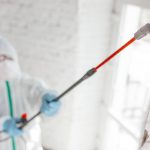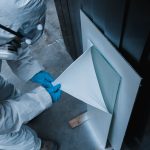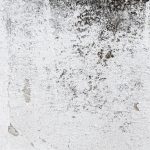
Water damage isn’t just an aesthetic issue—it can affect the structural integrity of your home and create conditions ideal for mold growth, leading to health risks and costly repairs. Acting quickly can save you time and money, but only if you recognize the warning signs. Common sources of water damage include plumbing leaks, roof leaks, poor drainage, and natural flooding, all of which are common in Southwest Florida’s climate.
Top Signs of Water Damage You Shouldn’t Ignore
Here are the signs that indicate water damage may be present in your home. Knowing these can help you catch water issues early and take action to prevent further damage.
1. Discolored or Stained Walls and Ceilings
Brown or yellow stains on walls and ceilings are often a sign of water damage. These stains occur when water seeps through building materials, bringing along minerals or contaminants that leave behind a discoloration. In places like Naples and Fort Myers, where heavy rain is frequent, discoloration on the ceiling may indicate a roof leak.
2. Peeling or Bubbling Paint and Wallpaper
Excess moisture trapped behind walls can cause paint and wallpaper to peel, bubble, or warp. If you notice paint lifting off the wall or wallpaper wrinkling, it’s a strong indication that water has found its way into the structure. Ignoring this sign can lead to mold growth in hidden spaces, especially in humid areas like Cape Coral.
3. Musty Odors
A damp, musty smell is often the first sign of water damage. This odor is caused by mold and mildew, which thrive in moist environments. If you notice a persistent musty smell that doesn’t go away with ventilation, it’s a good idea to investigate for water intrusion or mold growth.
4. Visible Mold Growth
Mold requires moisture to grow, so its presence is a clear indication of water issues. Mold can appear in various colors—black, green, gray, or white—and often appears in clusters. It’s commonly found in bathrooms, basements, and kitchens but can grow anywhere with sufficient moisture. Mold can impact air quality, so it’s essential to act quickly if you spot it.
5. Warped or Buckling Floors
Wood, laminate, and other flooring materials can start to warp, buckle, or swell when exposed to water. If your floors feel uneven, spongy, or show visible warping, it may indicate a hidden water source beneath the surface. In areas like Fort Myers and Bonita Springs, humidity and water intrusion can accelerate floor damage.
6. Cracked or Peeling Tile and Grout
Water can seep into the grout lines of tiled surfaces, causing cracks and gaps. This is especially common in bathrooms, where water exposure is frequent. Damaged grout and tiles can indicate water damage behind the walls or under the floor, potentially leading to structural issues.
7. Increased Utility Bills
An unexplained rise in your water bill may signal a hidden plumbing leak. Leaks in walls or underground often go unnoticed until they manifest as water damage, so a spike in water usage can be an early indicator of a problem that requires attention.
8. Soft or Sagging Drywall
Waterlogged drywall becomes soft, swollen, or saggy. This can occur in any area of the home, especially near plumbing or roof leaks. Sagging drywall can lead to structural instability and should be addressed promptly.
Locations Where Water Damage Commonly Occurs
Knowing where to look for water damage can help you stay proactive. Some of the most vulnerable areas include:
- Bathrooms: Plumbing leaks and poor ventilation can create ideal conditions for water damage and mold.
- Kitchens: Sink leaks, refrigerator water lines, and dishwashers can leak and cause gradual damage.
- Basements and Attics: These spaces are particularly prone to water intrusion, whether from roof leaks or groundwater.
- Windows and Doors: Improper sealing can allow water to enter, causing damage around frames and sills.
Why You Shouldn’t Ignore Water Damage
Leaving water damage unchecked can lead to serious issues, including:
- Mold Growth: Mold thrives in damp environments and can affect indoor air quality, leading to respiratory issues and allergic reactions.
- Structural Damage: Water can weaken wood, drywall, and concrete, compromising the structural integrity of your home.
- Electrical Hazards: Water and electricity don’t mix. Water intrusion can lead to electrical shorts, increasing fire risk.
- Costly Repairs: Water damage tends to worsen over time, so addressing issues early can save you on expensive repairs down the line.
How QCI Online Can Help Southwest Florida Residents
For homeowners in Naples, Fort Myers, Cape Coral, Bonita Springs, and surrounding areas, professional water damage inspection and remediation are essential. At QCI Online, our team specializes in identifying and resolving water damage issues with prompt, effective solutions tailored to Southwest Florida’s unique climate challenges. We conduct thorough inspections, pinpointing both visible and hidden damage, and provide a detailed remediation plan.
Our services include:
- Water Extraction and Drying: Immediate extraction of standing water and industrial-grade drying methods to prevent mold.
- Mold Remediation: Safe, chemical-free mold removal to ensure healthy indoor air quality.
- Structural Repairs: Comprehensive repairs to restore damaged walls, floors, and other areas.
- Preventive Solutions: Advice and services to prevent future water damage, such as sealing, waterproofing, and humidity control.
Contact Us
If you notice any of these signs of water damage, don’t wait until the issue worsens. Contact QCI Online for professional water damage inspection and restoration services in Southwest Florida. With over 28 years of experience, we’re equipped to handle even the toughest water damage cases with efficiency and care.
Reach us at (239) 777-2875 or visit our website qci-online.com to learn more about our services and get the help you need to protect your home from water damage.






